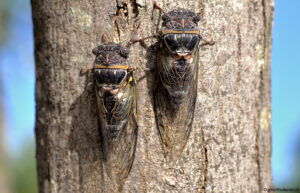
#StopAsianHate
The COVID-19 pandemic has impacted everyone in the United States. But each group has had its own experiences. Asian Americans and Pacific Islanders (AAPI) have faced the job losses and economic hardships that many Americans have felt, and also were the target in a rise in anti-Asian racism. Former president Trump’s insistence on calling COVID-19 the “China virus” led some Americans to blame Asian Americans for the disease. In fact, there have been nearly 3,800 attacks or incidents of hate and discrimination against Asian Americans this past year alone. Then, on Tuesday March 16, a white gunman shot and killed eight people at three massage parlors in Georgia. Six of them were Asian women.
Out of this tragedy, the #StopAsianHate movement was born. Activists staged hundreds of protests and rallies over several days across the United States. Local governments pledged resources to help battle racism; one example of this is King County, Washington, which recently announced a new investment of $5 million for community organizations that fight hate and hate-based violence. President Biden wrote executive orders condemning the attacks, and anti-hate crime legislation is being considered in both chambers of Congress.
What Do You Think? What can you do to speak out against anti-AAPI violence in your own community? Examples could include donating time or money to organizations that support AAPI communities; educating yourself, your school, or your community about issues facing your AAPI members; hosting movie nights or book groups featuring titles by AAPI artists and directors; and more.
Brood X
It’s that time again: when cicadas, long dormant underground, emerge from the earth to make a lot of noise and coat the trees with their creepy abandoned exoskeletons. This year’s batch is known as Brood X, and it has been waiting underground for seventeen years. They are a special type of cicada known as “periodical cicadas,” which only emerge once every thirteen to seventeen years. Only fifteen such broods exist in the world, all of them located in the eastern United States.

Periodical cicadas have been around for tens of thousands of years. Their life cycle is unique. Once they emerge from the ground, they swarm trees, looking for mates. After they lay their eggs in the trees, they die. The eggs hatch, the nymphs fall to the ground and burrow down to spend the next thirteen to seventeen years underground, waiting for their turn to emerge and begin the whole cycle over again. Scientists don’t know why the periodical cicadas have such a long life cycle. Some think it may be a way for the creatures to avoid predators, while others believed it developed to survive ice ages.
Unfortunately, even these ancient insects aren’t immune from the effects of climate change. More and more often in the past few years, groups of cicadas are emerging early: up to four years ahead of schedule. Scientists think that this could happen when an early spring warm-up is followed by a late spring freeze, which might be tricking the insects into thinking a full year has passed. Whatever the reason, early emergence isn’t good for cicadas. For one thing, when a small group of them emerges early, they are more vulnerable to birds and other predators than they would be in a large swarm. It’s also possible that if the early-emergers manage to reproduce, it creates a whole new “generation” of cicadas that will be permanently off-schedule from the rest of the population.
Dig Deeper To learn more about periodical cicadas, watch this short video How do the insects survive underground for so long? What do they feed on? Why do they make so much noise? During the peak of a swarm, how many cicadas can be found in a single tree?
The Maddest March Ever?
By many counts, this year’s March Madness has been an incredibly unusual one. Because of COVID-19, the annual event has been toned down significantly. Audiences inside basketball arenas are limited to just a few hundred people, and there are none of the usual celebrations.
And if the results of this year’s tournament messed up your bracket, you’re not alone. As of the Sweet Sixteen, there had already been twelve “upsets” as defined by the NCAA. A full 25 percent of the Sweet Sixteen came from the Pac-12: a conference that hasn’t produced a national champion since 1997 and has only sent one team to the Final Four in the past eleven years. Creighton and Oral Roberts haven’t been in the Sweet Sixteen since 1974. Only two of the tournament’s remaining sixteen schools have won national championships in the past century.
So why has 2021 turned into such a Cinderella story? A couple of reasons. First, COVID-19 meant that so many pre-season games were cancelled that it was hard to get an accurate idea of how well teams were really doing. That means that it’s possible that many were evaluated incorrectly to begin with. Second, the teams that were able to overthrow their higher-ranked opponents often had older teams with players that had been with the program for longer.
Dig Deeper Did this season’s unusual atmosphere continue into the Final Four and beyond? Write a short paragraph describing the remainder of the 2021 championship.
Written Among the Stars
Did you know that asteroids have names? Scientists generally identify asteroids by a name that is based on its location and position in space. But this year, a group of 27 asteroids in a belt between Mars and Jupiter will be named in honor of African American, Hispanic, and Native American astronauts and cosmonauts.
Two of the asteroids are named for Stephanie D. Wilson and Joan Higginbotham, both women who have made great contributions to space exploration. Higginbotham, who is now retired, worked on 53 space shuttle launches between 1996 and 2007. She also served as a mission specialist on the International Space Station (ISS). Wilson made three trips to the ISS and worked as an aerospace engineer at NASA’s Jet Propulsion Laboratory in Pasadena, California.
Another is named for Jose Hernandez, who grew up as an agricultural worker in a migrant farming family. Before becoming an astronaut, Hernandez earned two degrees in electrical engineering and developed the first full-field digital mammography imaging system. And a fourth is named for Ed Dwight Jr., who was recruited to be the first African American astronaut trainee. Unfortunately, he faced such racism that he left the program and resigned from the Air Force in 1966. Dwight instead become a sculptor depicting African American history.
The 27 asteroids were discovered by an astronomer named Marc W. Buie, and were named by the International Astronomical Union (IAU). The push to honor this diverse group of astronauts by naming asteroids after them was led by Cathy Olkin and Keith S. Noll of NASA. Olkin and Nollhope to name many more asteroids after multicultural astronauts and cosmonauts in the future.
